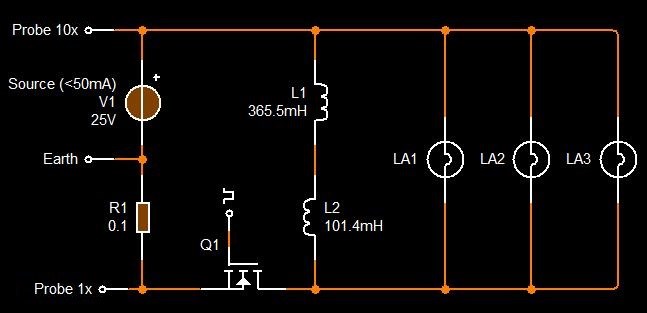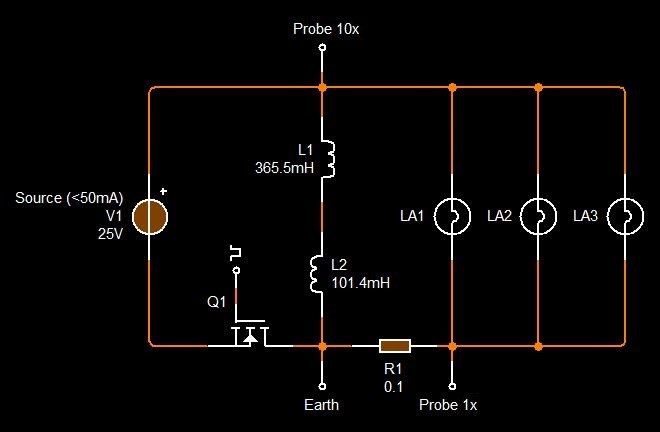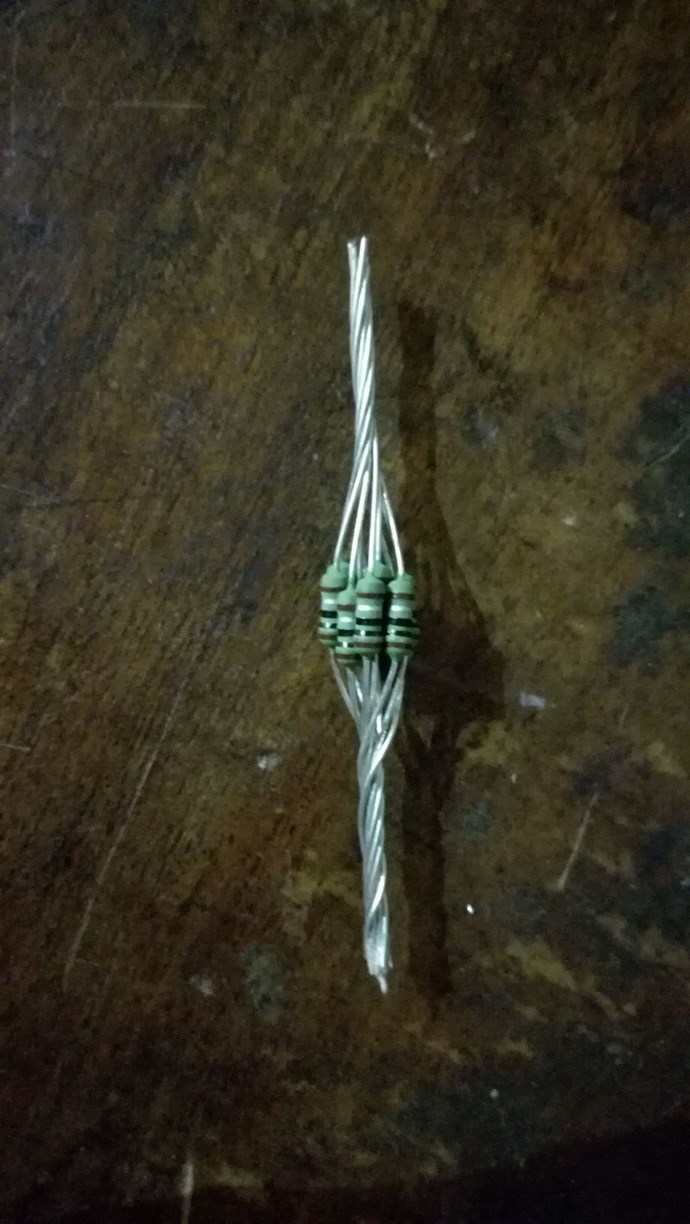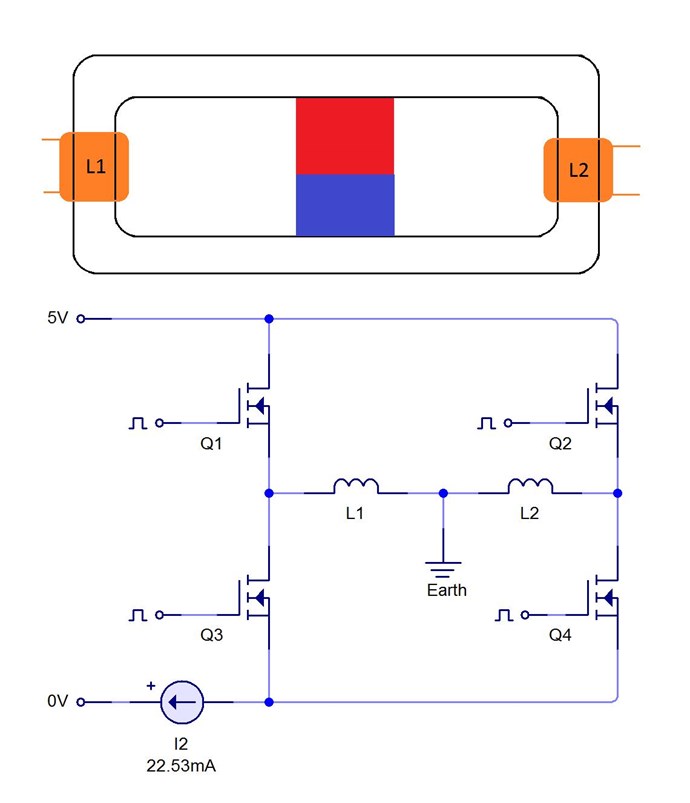Fighter, you asked for some know-how on capacitors. Sorry for delay - am currently very busy.
Here you are.
If you deal with electrolytic caps and fast signals the code word is "low ESR" (see link). These types of capacitors are specified for 100KHz as well. Use of such caps is at SMPS (switch mode power supply) devices - as example.
But you will probably not find a model with (a) low ESR AND (b) 10 mF capacity. Additionally it makes no real sense in your setup as you deal with a frequency around 500KHz. At this freqeuncy this cap does not see the frequency at all. It hides successfully behind the high ESR (series resistor).
But there is a trick available:
Adding different capcitors (value / type) in parallel. Then it does not matter if you have huge amps pulses or fast high frequency ones. Every shape of signal will find its proper "drain" to sink in. Such a cascade could look like:
- 1000µF electrolytic (not necessarily low ESR)
- 100µF electrolytic low ESR
- 10µF electrolytic low ESR
- 1µF ceramic
- 100nF ceramic
- and more - depending on application
In case of problems you might add at every stage (for test) a second one and see if it makes any difference.
If you consider the knowledge regarding low ESR (see link above) you will understand that we deal with a kind of parasitic series resistor inside the capacitor. Best is to have it low. For ceramic cap types ESR is not really an issue.
Considering the notion above you might deduct that it is important to not add resistance by tiny little wires if you connect your capacitors. Such setup will add deliberate ESR to any kind of capacitor.
(BTW: I hate those Chinese cables with alligator clips.  You see them frequently in many youtube videos. If you use them at small signals it might be OK but NEVER, NEVER use them if you have to consider decent current pulses. Depending on budget please consider those terminals w/ or w/o screw from normal mains installation.
You see them frequently in many youtube videos. If you use them at small signals it might be OK but NEVER, NEVER use them if you have to consider decent current pulses. Depending on budget please consider those terminals w/ or w/o screw from normal mains installation.


 They were invented for huge contact performance. Such wiring at your setup does not look nice but is very healthy :-))
They were invented for huge contact performance. Such wiring at your setup does not look nice but is very healthy :-))
Experience:
If you wire a normal 50Hz PSU from rectifier to the smoothing cap and you use fat wire; it is still a huge difference if you wire 8cm or 3cm between rectifier and cap. You see the result immediately at the scope as change in ripple voltage. Sometimes there is no ripple at the capactitor and huge ripple at output if wiring was done wrongly.
So please, obsereve your wiring! If you are not happy with your setup then check (1) wire diameter (2) contact quality and (3) distance. These ingredients if used smartly, perform often as cheap and instant magic.
These hints are not for Fighter only, of course. Physics performs universally for ALL in very same manner!
~o0o~




 You see them frequently in many youtube videos. If you use them at small signals it might be OK but NEVER, NEVER use them if you have to consider decent current pulses. Depending on budget please consider those terminals w/ or w/o screw from normal mains installation.
You see them frequently in many youtube videos. If you use them at small signals it might be OK but NEVER, NEVER use them if you have to consider decent current pulses. Depending on budget please consider those terminals w/ or w/o screw from normal mains installation.

 They were invented for huge contact performance. Such wiring at your setup does not look nice but is very healthy :-))
They were invented for huge contact performance. Such wiring at your setup does not look nice but is very healthy :-)) 



 i.e. type micro USB
i.e. type micro USB

